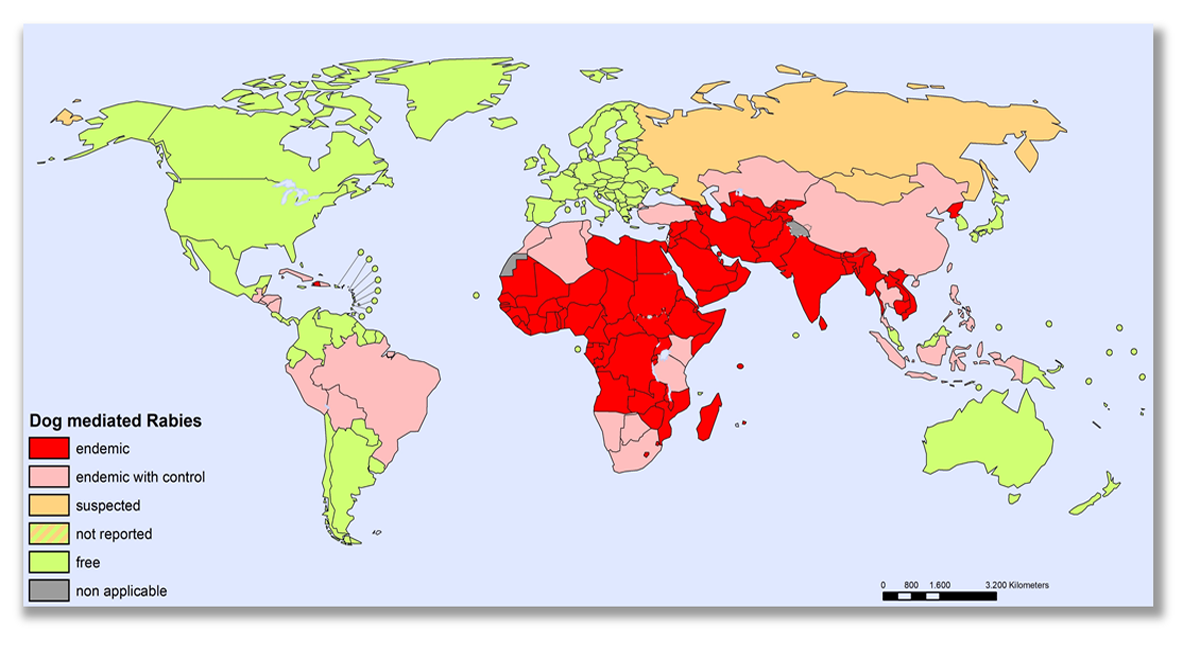
PPMMUU
Member-
Posts
294 -
Joined
-
Last visited
Content Type
Events
Forums
Downloads
Quizzes
Gallery
Blogs
Everything posted by PPMMUU
-
Rabies immunoglobulin injection at the wound is not wrong, but it is not absolute mandatory under current standard practice. Rabbits are mammals. They can contract and transmit rabies. Children can receive the pre-exposure rabies vaccine at any age (yes, any age). One hour is better than three days. Three days is better than seven days. Seven days is better than one month. The sooner, the better. As long as you haven’t developed rabies symptoms yet, vaccines are still useful—because once symptoms appear, survival is virtually impossible. Using the same vaccine brand is preferred, but switching brands is acceptable.
-
With your well-educated Thai wife, a basic palliative care service at a government hospital can serve you well. They can provide morphine tablets adjusted for your comfort, and when you are no longer able to take medication orally, they can supply an injection device. Your wife can adjust the dose if needed through telephone consultations with the palliative care doctors.
-
Your symptoms can be caused by several kinds of diseases, so I suggest you see a general practitioner (GP) first. Some hospitals have internal medicine specialists in general practice exam rooms, so don’t be surprised if you’re told to see one.
-
Palliative care is officially part of the Thai government hospital services, and in reality, the situation is not far behind. Several government hospitals have palliative care departments, and some even have dedicated doctors and nurses for this purpose. However, hospice services are rarely available. Most end-of-life care patients in Thailand are cared for by relatives at home. I assume you may not have such relatives, but perhaps you can hire a full-time nurse to act as a ‘relative’ and receive palliative care services from government hospitals. A quick search shows that Pathum Thani Hospital has a palliative care service guideline, which strongly implies that they offer such services. This kind of care often involves a network of government-run primary care units (known as โรงพยาบาลส่งเสริมสุขภาพตำบล, formerly called สถานีอนามัย — you can ask any Thai person you know about them) that provide home visits. These services almost always include morphine tablets, with dosages adjusted to effectively control pain and discomfort. Most of these services also provide a slow-injection device for subcutaneous morphine administration when oral medication is no longer possible. However, they are legally not allowed to administer a lethal dose. Another quick search shows that Thammasat University Hospital runs a hospice service under the name Thammasat Thammarak Hospice and Palliative Care Center, located in Pathum Thani as well. Their contact number is 095-464-9783. You might consider reaching out to them. May you find peace and comfort during this stage of life.
-
The text only tells you how to take the drug; the name or purpose of the drug is not mentioned. Identifying the pill is practically impossible since there is no standard for pill shape, size, or color. The only reliable way is to contact the source. The name of the clinic is written on the label, but there is no phone number. I advise you to ask a Thai friend to help you find the clinic’s contact information. Not all antibiotics come in capsules or have color.
-
Brain imaging for headaches in cancer survivors is understandable and potentially beneficial. Whole-body imaging, not so much.
-
Ramathibodi SDMC is practically a private hospital. You may want to specify that you’re on a budget and expect to receive standard care in the general section of Ramathibodi Hospital.
-
Pulmonary function tests aren’t the same as tests for gas exchange and don’t really measure how well oxygen and carbon dioxide move at the alveolar level. Instead, they look at how air flows in and out of your lung, how fast it goes in, how much air you can take in, and how quickly you can blow it out. In bronchiectasis, the bronchial walls are damaged, especially the elastic and muscular parts, so they can’t keep their normal shape. That makes it harder to breathe out forcefully, which shows up in the test results. Glad to hear you’re happy at the beach. Being by the sea can actually feel great for people with chronic lung issues, whatever it is.
-
Using a medical nebulizer at home is not hard. There are steps to follow, but overall it’s very manageable. The hard part is knowing when to use it and ensuring it does more good than harm.
-
If bronchiectasis is the culprit, you should have abnormal lung function test results. If you have chronic hypoxia severe enough to cause clubbing of the toes, it should have been detected with a simple oxygen saturation test (the clip-on device for your finger). It’s also unlikely for clubbing to occur only in the toes without also appearing in the fingers. Bronchiectasis is practically incurable, so it’s not useless that the real doctors have been trying to find a curable or treatable cause for you. A high-resolution CT scan can be done to confirm the diagnosis for peace of mind. N-acetylcysteine doesn’t help much, but it does offer a small benefit with minimal harm—so it’s okay to use.
-
It’s 1330. And there also are other way to do that including via electronic means. You can just tell them to google or give this url to them. https://www.sanook.com/money/855884/
-
Really annoying cough/running nose/rash - HMPV?
PPMMUU replied to Kinnock's topic in Health and Medicine
That could be caused by almost any of dozens of respiratory viruses. And yes, it could be HMPV—not because it’s having an outbreak in China, but because HMPV is an old virus that has been everywhere for decades, including in Thailand. Anyone experiencing cold symptoms for longer than three weeks should visit a doctor again, whether it’s from HMPV or any other virus, as there may be more that can be done to help. -
Can I take a third party blood test to BKK hospital?
PPMMUU replied to Batty's topic in Health and Medicine
It should be fine most of the time. However, there may be some details about the type of test for certain items that could make it useless for the doctor to help you. I would suggest asking the doctor directly next time if you can do the blood test through a third-party lab. I’m pretty sure most doctors would be glad to help you. -
If she is Thai or speaks Thai she can call 1663.
-
I think you should try to find the cause. Sometimes, you will find one, and some causes are even curable. Don’t be surprised—some causes are curable, but only within a certain period of time.
-
We can’t determine the speed of something that doesn’t exist.
-
That was very rude, and such a rude doctor doesn’t deserve any ounce of respect. However, his clinical approach and line of reasoning, while obviously different from yours, isn’t very far-fetched.
-
Living will in Thailand; suggestions requested
PPMMUU replied to NewGuy's topic in Health and Medicine
In practice, the most important aspect of this is that the people around you know, understand, and agree with your living will, or at least accept it. Thai healthcare professionals often follow the wishes of those close to you at the time it happens. -
There is no easy, cost-effective, safe way to ‘check your aorta.’ One would only need a check if there are symptoms.
-
When you mentioned a mosquito-borne condition that could result in permanent neurological damage around the Mekong, the first disease I think of is malaria.
-
Definitely not all. Some still think that Australian advice is applicable in Thailand.
-
-
Myasthenia gravis is quite common, so I believe any neurologist in Chonburi (of which there are a few in the public hospital, so there are likely some in the private sector too) will have at least some experience with it and will have long-term patients under their care. Unless your myasthenia gravis is very complicated, they should be competent enough to take care of you. But then again, Chonburi is not very far from Bangkok, where many neurologists are excellent, so it comes down to your preference.
-
Rabies death news is, like, a yearly thing in Thailand.
-
Injection into the stomach is for rabies prevention, not treatment, albeit an outdated method. This immunoglobulin regimen, which is quite expensive, no longer needs to be administered in the stomach but is still costly. Completing the rabies vaccine series beforehand will eliminate the need for this.






